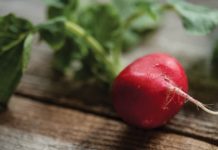
Have you heard of hyaluronic acid? You’re likely familiar with the term, since this star ingredient is included in everything from skin creams to joint supplements. However, you may not know exactly what it is or what it does—or how to consume it. Here, we break it down for you.
What is it?
Hyaluronic acid (HA) is a naturally occurring polysaccharide—basically, a complex sugar molecule. In our bodies, HA is found in our connective, epithelial, and neural tissues (including our hearts, skin, and joints). Not exclusive to humans, it’s also found in other animals, as well as bacteria and algae.
Our bodies create HA, with a very fast rate of turnover. However, we produce less as we age.
What are the benefits?
Scientists are still studying all the marvels of HA. Although more research needs to be done, HA is thought to help
- skin to remain hydrated and supple
- lubricate and cushion our joints
- wound healing in the body, including for those with diabetes
- protect cells by acting as a powerful antioxidant
- with ear infections
How can you get more?
Supplements
HA supplements are widely available, and they’re the most effective way to get more HA. Oral supplements exist, as well as injections for joints with osteoarthritis. Those considering supplements or injections should speak with their health care practitioner to ensure they choose the right option for their unique needs.
Foods
HA is also found in foods, though not in therapeutic doses. Since HA is present in animal tissues, it also exists in the animal products we eat. Other foods may help increase the production of HA, although research is still in its infancy.
Bone broth
Scientists believe our ancestors ate versions of bone broth more than 10,000 years ago. Today’s version is a stock typically made by simmering bones from animals like chickens or cows. Bone broth is thought to contain protein, collagen, and HA, along with other nutrients, though the exact nutrient content varies. When possible, opt for broth made from organic and ethically raised animals.
Mollusks
HA is found in mollusks, including seafoods like clams, oysters, and scallops. Ensure you choose sustainably sourced seafood whenever possible.
Citrus
Citrus may help boost HA levels. One 2019 in vitro study found that fermented dried Citrus unshiu (commonly known as satsuma mandarin orange) peel extracts helped induce the production of HA in human skin cells. The researchers hope this ingredient may help reduce inflammation and improve skin moisture.
Magnesium-containing foods
Magnesium aids in HA synthesis in the body. According to a 2012 study published in the International Journal of Research in Chemistry and Environment, “a lack of magnesium in the diet may be part of the cause of low hyaluronic acid levels.” Unfortunately, many of us don’t consume enough magnesium.
Magnesium-rich foods include pumpkin seeds, cocoa, sesame seeds, nuts, and soy, as well as fruits and vegetables like potatoes (with skin on), spinach, green beans, and bananas.
Soy
In addition to being high in magnesium, soy contains phytoestrogens that may increase HA production. Tofu is an excellent, healthy food to incorporate in your diet. You can also try edamame, tempeh, and other soy foods.
Zinc-containing foods
Low levels of zinc have been associated with low levels of HA in the body. Examples of foods rich in zinc include pumpkin seeds, peanuts, beef, and oysters.
Topical hyaluronic acid
About 50 percent of the total HA in our bodies is found in our skin, where it holds many times its weight in water. As a result, it’s a key ingredient in many topical skin products to help improve wrinkles, skin hydration, and skin elasticity.
It can be derived from natural sources (including chicken combs) or synthetic sources (made in a laboratory). Vegan options are available. HA can be found in creams, serums, mists, cleansers, and other skincare products.
Every product will have specific directions to follow; however, these are some general tips.
- Product layering is key. Layer serum underneath cream, and apply HA-containing products to damp skin.
- You may see the term “sodium hyaluronate” on the product label. That’s the salt form of HA, which is more stable and resistant to oxidation, as well as more water soluble.
- Try a low concentration to start and do a patch test. However, this ingredient is typically well tolerated and non-irritating, even for those with acne or sensitive skin.
- As always, avoid products with unnecessary fillers and artificial fragrances.
Leah Payne is a writer, editor, blogger, and mom. Follow her at leahstellapayne.com and instagram.com/leahstellapayne. This article was originally published in the May 2020 issue of alive Canada, under the title \”The Wonders Of Hyaluronic Acid.\”






























